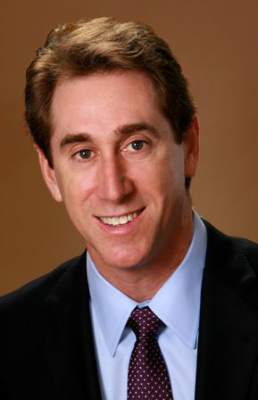EXPERT ANALYSIS FROM SDEF HAWAII DERMATOLOGY SEMINAR
WAIKOLOA, HAWAII (FRONTLINE MEDICAL NEWS) – Of the plethora of cellulite treatment devices on the market, the Food and Drug Administration has deemed only two capable of providing long-term improvement in the appearance of cellulite on the buttocks and thighs, Dr. Michael S. Kaminer said at the Hawaii Dermatology Seminar provided by Global Academy for Medical Education/Skin Disease Education Foundation.
These two devices are Cellulaze , a 1440 nm Nd:YAG laser typically utilized in conjunction with liposuction and marketed by Cynosure, and Cellfina , a semiautomated system for precise dermal undermining beneath cellulite dimples and marketed by Merz. Both devices target the structural problem that causes cellulite: subdermal fibrous septae that are tethered to the dermis, pulling down on the skin with resultant fat herniation and creation of cellulite dimples. The devices have the same mechanism of benefit, which entails cutting and thereby releasing the fibrous septae, albeit through two different technologies. Cellulaze cuts the fibrous septae with a laser fiber, while Cellfina uses a rapidly moving, piston-driven 18-gauge blade.
The superior efficacy of these two devices settles a long-standing controversy regarding the cause of cellulite, according to Dr. Kaminer, a dermatologist at Yale University, New Haven, Conn., and SkinCare Physicians of Chestnut Hill, Mass. “I think we now know what causes cellulite … that if you cut the fibrous septae, things will improve.”
“There are a ton of devices (for treating cellulite) out there, but if you look at the literature none of them except Cellulaze and Cellfina have been shown to work,” he said. “Arguably the other options have, at most, limited efficacy.”
He cited a recent systematic evidence-based literature review led by Stefanie Luebberding, Ph.D., of the Rosenpark Clinic in Darmstadt, Germany. She and her coinvestigators concluded that “no clear evidence of good efficacy could be identified in any of the evaluated cellulite treatments,” which included shock wave and other forms of mechanical stimulation, massage, topical agents designed to plump up the skin, high- and low-energy laser therapies, infrared light, and radiofrequency (Am J Clin Dermatol. 2015 Aug;16[4]:243-56).
In U.S. clinical trials of Cellulaze, 68% of subjects had significant improvement at 1 year based on photographic evaluation and 65% based on Vectra three-dimensional surface imaging. Good to excellent results were reported by 76% of patients and 69% of physicians. On the downside, the Cellulaze device costs more than $100,000, recovery time is long, and the use of liposuction is falling in the United States, Dr. Kaminer observed.
He was the lead investigator in the multicenter study of Cellfina, in which 96% of patients in the open-label trial said they were satisfied or very satisfied with their results at 2 years post procedure.
From a mean baseline score of 3.4 on a 0-5 Cellulite Severity Scale, the average improvement was 2.0 points at both 1- and 2-year follow-up as assessed by independent physicians examining standardized professional photographs. Of 55 study participants, 2 experienced mild, transient adverse events ( Dermatol Surg. 2015 Mar;41[3]:336-47 ).
Based on that trial, a single treatment session provides improvement lasting up to 1 year in the appearance of cellulite. Similar findings were noted 2 years after the procedure, said Dr. Kaminer, and he and his coinvestigators are now preparing to submit to the FDA the 3-year follow-up data, which show “essentially the same” sustained improvement.
Before the Cellfina procedure begins, the target cellulite dimples are marked on the standing patient. Roughly 20-25 dimples can be treated per session. The patient then assumes a prone position. A vacuum device is placed over the target area to control the depth and area of treatment. Tumescent anesthesia is injected, and then the piston-driven 18-gauge blade is introduced. The vacuum suction precisely controls the cutting depth at either 6 or 10 mm.
Dr. Kaminer noted that, potentially, the cellulite treatment market is colossal. One study concluded that an estimated 85% of American women age 24-54 have cellulite, and 37% of them – nearly 24 million women – say they are interested in a minimally invasive procedure to get rid of it.
“The definition of cellulite depends on what women you ask. Based on what I hear, 100% of women believe that they have cellulite and a lot of them are interested in having their cellulite treated,” he remarked.
Dr. Kaminer reported serving as a consultant to Merz, the maker of Cellfina, and receiving research funding from Cabochon, the maker of a system for improving the appearance of cellulite .
The SDEF and this news organization are owned by the same parent company.





